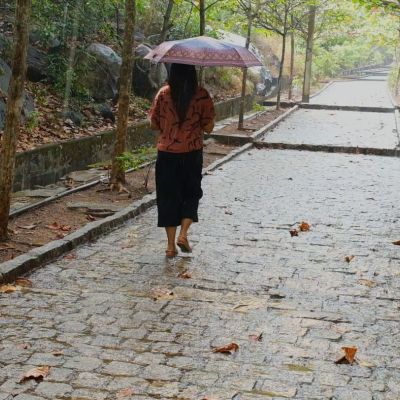KANYAKUMARI
"As endless as the ocean, as timeless as the tides…”
Kanyakumari is a coastal town in the state of Tamil Nadu on India's southern tip. Jutting into the Laccadive Sea, the town was known as Cape Comorin during British rule and is popular for watching sunrise and sunset over the ocean. It's also a noted pilgrimage site thanks to its Bagavathi Amman Temple, dedicated to a consort of Shiva, and its Our Lady of Ransom Church, a center of Indian Catholicism.
The place derives its name from the goddess Kanya Kumari, considered to be the sister of Krishna, a goddess is believed to remove the rigidity from the mind, to whom women pray for marriage. In 1656, the Dutch East India company conquered Portuguese Ceylon from the Portuguese, and the name eventually corrupted to "Comorin" and was called Cape Comorin during British rule in India. The city was later renamed Kanyakumari by the Government of India and the Government of Madras.
According to a Hindu legend, Kanya Devi, an avatar of Parvati, was to marry Shiva, who failed to show up on his wedding day. Rice and other grains meant for the wedding feast remained uncooked and unused.As the legend goes, the uncooked grains turned into stones as time went by. Some believe that the small stones on the shore today, which look like rice, are indeed grains from the wedding that was never solemnised. Kanya Devi is now considered a virgin goddess who blesses pilgrims and tourists who flock the town. Her temple located in Kanyakumari is a Shakti Peetha or a holy shrine. According to another Hindu legend, Lord Hanuman dropped a piece of earth as he was carrying a mountain with his life-saving herb, Mrita Sanjivani, from the Himalayas to Lanka (Sri Lanka) during the Rama-Ravana war. This chunk of earth is called Marunthuvazh Malai, literally "hills where medicine lives". This is said to be the reason for the abundance of unique native medicinal plants in the area. Marunthuvazh Malai is located near Kottaram about 7 km (4 mi) from Kanyakumari town on the Kanyakumari-Nagercoil highway. The sage Agasthya, who was an expert in medicinal herbs, is believed to have lived around this site in ancient days. It is believed to be the reason so many medicinal herbs are found on the hills near Kanyakumari. A nearby village is named
Agastheeswaram after the sage. Today, there is a small ashram on the middle of the Maruthuvazh Malai hill, which tourists visit (after a short trek from the base of the hill), both to visit the Ashram and also to take a glimpse of the sea near Kanyakumari a few kilometres away, and the greenery below.
Vivekananda Rock Memorial is a popular tourist monument in Vavathurai, Kanyakumari, India. It was built in 1970 in honour of Swami Vivekananda who is said to have attained enlightenment on the rock. According to local legends, it was on this rock that Goddess Kanyakumari performed tapas in devotion of lord Shiva.
The Thiruvalluvar Statue, or the Valluvar Statue, is a 41-metre-tall (133 ft) stone sculpture of the Tamil poet and philosopher Valluvar, author of the Tirukkural, an ancient Tamil work on Dharmic and morality. It is located atop a small island near the town of Kanyakumari on the southernmost point of the Indian peninsula on the Coromandel Coast, where two seas (the Bay of Bengal and the Arabian Sea) and an ocean (the Indian Ocean) meet. The statue was sculpted by the Indian sculptor V. Ganapati Sthapati, who also created the Iraivan Temple, and was unveiled on the millennium day of 1 January 2000 by the then Chief Minister M. Karunanidhi. It is currently the 25th tallest statue in India.
















